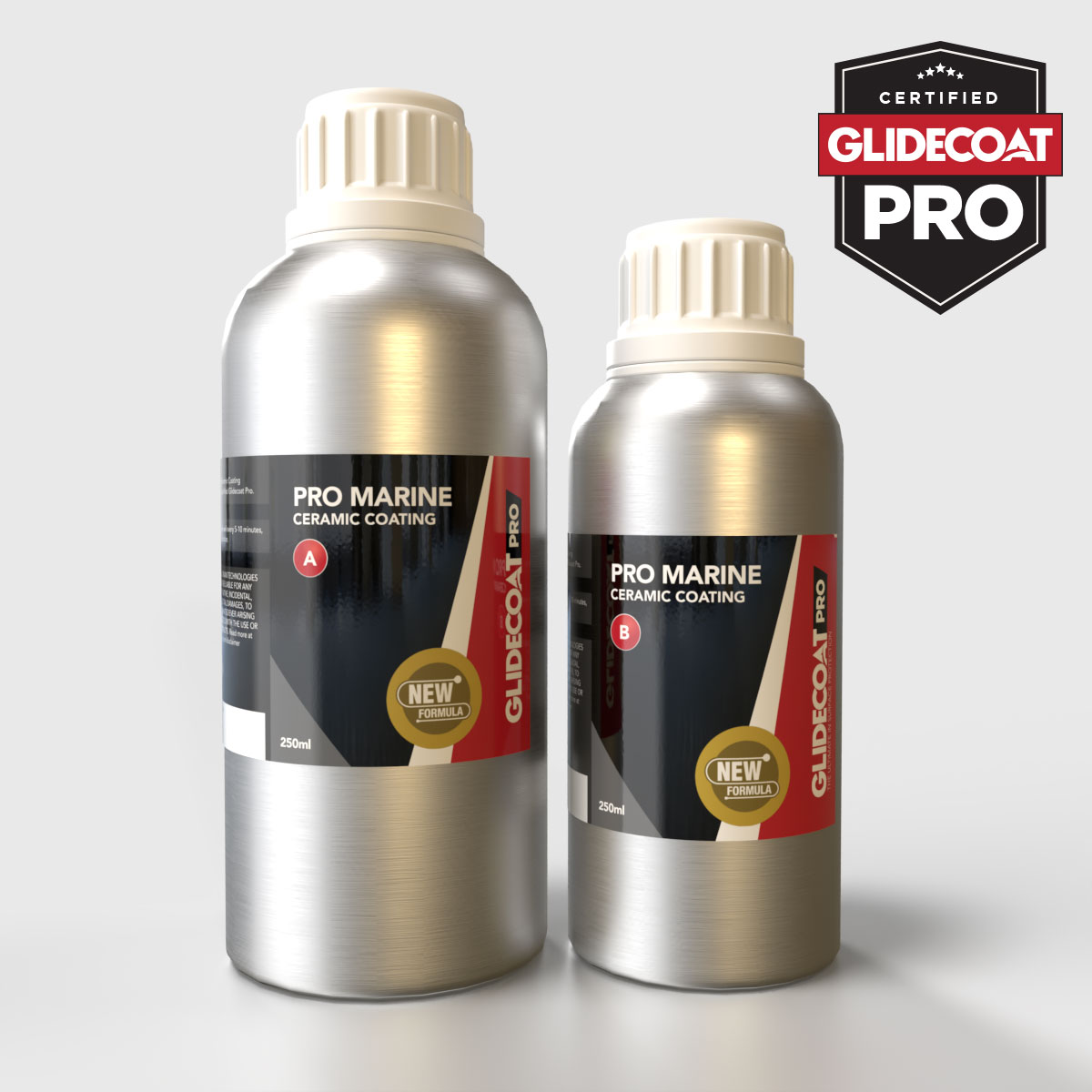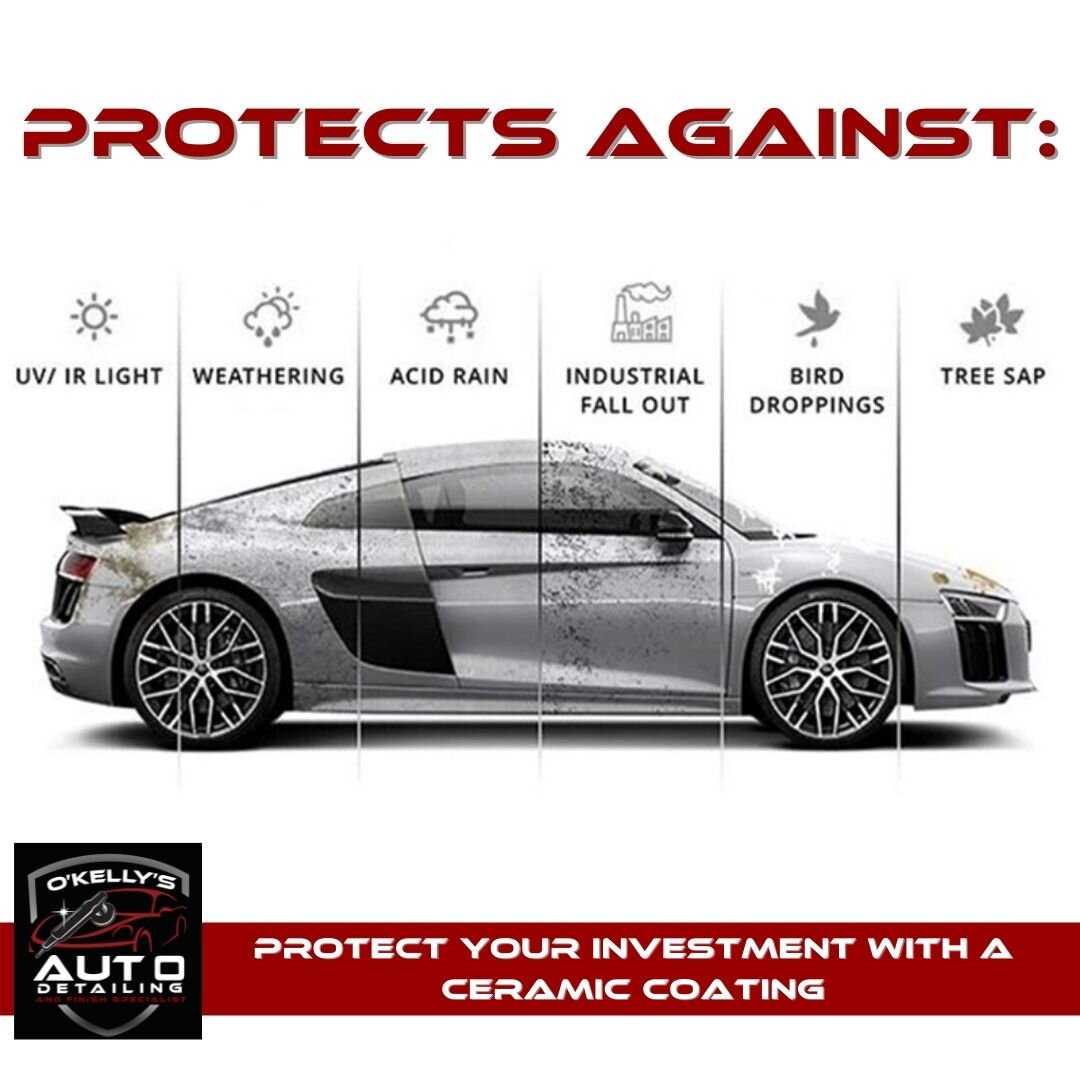5 Reasons Final Touch Auto Works Ceramic Coatings Boost Resale Value
5 Reasons Final Touch Auto Works Ceramic Coatings Boost Resale Value
Blog Article
The Ultimate Overview to Ceramic Coatings: Enhancing Your Vehicle's Finish and Durability
Ceramic layers could be the service you have actually been searching for if you're looking to elevate your auto's appearance and protection. These innovative layers bond with your vehicle's paint, developing a sturdy barrier versus ecological damage. However exactly how do they compare to standard wax? Comprehending the advantages and application procedure can make a significant difference in your cars and truck treatment regimen. Let's explore what makes ceramic finishes a worthwhile financial investment for your vehicle.
What Are Ceramic Coatings?
Ceramic finishes are sophisticated protective layers that boost your vehicle's outside. They're made from a liquid polymer that chemically bonds with your automobile's paint, developing a resilient shield. Unlike standard wax or sealants, which wear away over time, ceramic coatings provide durable defense against environmental impurities like UV rays, dust, and chemicals.When you apply a ceramic covering, you're buying an obstacle that fends off water, making it easier to clean your auto and maintaining it looking newer for longer. This modern technology aids protect the honesty of your paint, reducing the risk of scratches and oxidation.Ceramic finishings been available in various formulations, each designed to cater to different needs and choices. You can select a DIY set or select specialist application, depending upon your convenience level and spending plan. Generally, ceramic coverings stand for an innovative solution for preserving your vehicle's visual appeal and durability.
Benefits of Ceramic Coatings
You reveal an array of benefits that go beyond plain visual appeals when you spend in a ceramic finish. To begin with, it supplies remarkable protection versus environmental impurities like dirt, bird droppings, and UV rays, maintaining your vehicle's paint looking brand-new longer. You'll see that maintenance becomes less complicated, as the hydrophobic residential properties trigger water and crud to slide off easily. This implies less time invested washing and outlining your vehicle.Additionally, ceramic finishes can boost the glossiness of your automobile's surface, offering it that display room sparkle. They likewise offer resistance to scratches and swirl marks, which helps preserve your automobile's resale worth. With a ceramic layer, you're not simply protecting your investment; you're also enhancing its overall appearance and longevity. Ultimately, this advanced innovation assurances your cars and truck attracts attention while appreciating long-term benefits that typical waxes just can't match.
The Application Refine: How to Use Ceramic Coatings
Applying a ceramic coating entails several essential steps to assure perfect results. First, thoroughly clean your car to get rid of any kind of dust, gunk, or contaminants. This guarantees the surface is clean and ready for the finishing. Next, decontaminate the paint making use of a clay bar to remove embedded particles. Later, check the paint for flaws and polish it to attain a smooth surface.Once your car's surface area is prepped, apply the ceramic finishing in little sections. Use an applicator pad to spread out the coating equally, adhering to the manufacturer's guidelines. Enable the finishing to cure for the advised time, typically in between one to two hours, depending on the product.Finally, stay clear of washing your car for at the very least a week to allow the layer bond effectively. Complying with these steps will certainly aid you accomplish a durable, high-gloss surface that protects your cars and truck for years ahead.

Contrasting Ceramic Coatings to Typical Wax
After ensuring your vehicle's surface area is completely prepped with a ceramic layer, it's time to consider just how this modern service piles up against conventional wax. Ceramic layers offer a durable layer of defense that lasts for years, while wax normally offers just a few weeks of shine. You'll see that ceramic finishings bond with your paint, creating a hydrophobic surface that repels water and dirt, making maintenance easier.In comparison, conventional wax rests on top of the paint and needs frequent reapplication. With ceramic coatings, you get premium scratch resistance and UV defense, helping to stop fading and oxidation. While the preliminary financial investment for a ceramic coating is higher, the lasting advantages usually surpass the prices. If you're looking for sturdiness and improved gloss, ceramic finishings are a wise option over conventional wax.
Maintenance Tips for Your Ceramic Coated Vehicle
To keep your ceramic-coated vehicle looking immaculate, normal upkeep is essential. Start with a gentle wash using a pH-balanced shampoo; avoid severe detergents that can deteriorate the layer. Use a microfiber laundry mitt to stop scrapes and constantly rinse thoroughly to eliminate any kind of soap residue.After washing, completely dry your vehicle with a soft microfiber towel to avoid water places. Take into consideration applying a ceramic maintenance spray every couple of months to improve the finishing's hydrophobic buildings and include an additional layer of protection.It's also sensible to prevent automated auto cleans with rough brushes, as they can damage the coating. Rather, decide for hand washes or touchless clean choices. Furthermore, consistently check your vehicle for impurities like tree sap or bird droppings and address them quickly to prevent etching. Adhering Continue to these ideas will help maintain the sparkle and durability of your ceramic-coated lorry for many years to come.
Usual Misconceptions Regarding Ceramic Coatings
In spite of the outstanding advantages of ceramic finishings, several myths can produce confusion for cars and truck proprietors. One typical mistaken belief is that ceramic coverings get rid of the need for maintenance. While they do use boosted protection, routine cleaning and treatment are still vital to keep that high-gloss finish.Another myth is that these finishings are scratch-proof. While they give a strong layer of defense against small scratches, they can not hold up against extreme impacts or rough materials.Many additionally believe that ceramic coatings will certainly make their cars and trucks immune to all contaminants. Actually, they ward off dust and water however won't protect against concerns like bird droppings or tree sap from causing damages if left unattended.Lastly, some think that using ceramic coatings is a do it yourself job anyone can deal with, yet achieving a flawless application typically needs specialist experience to guarantee peak results.
Picking the Right Ceramic Covering for Your Car
How do you choose the appropriate ceramic finish for your cars and truck? Begin by considering the degree of defense you need. If your car encounters extreme weather or frequent roadway trips, opt for a high-end layer that supplies premium longevity and resistance to scrapes, UV rays, and chemical stains.Next, assume regarding the application approach. Some coatings require specialist browse around this site installation, while others are DIY-friendly. If you're experienced, a DIY product might save you money, but for the best results, an expert can assure proper application.Don' t fail to remember to examine the longevity of the coating. Some last a few years, while others can protect for a years or even more. Read testimonials and reviews to determine user contentment. By weighing these variables, you'll discover a ceramic finish that not only boosts your cars and truck's appearance yet likewise provides resilient protection.
Regularly Asked Concerns
For How Long Do Ceramic Coatings Last on Typical?
Ceramic finishings generally last anywhere from two to 5 years, depending upon factors like application, maintenance, and environmental problems. You'll want to adhere to correct treatment regimens to optimize their longevity and performance.
Can Porcelain Coatings Be Applied Over Paint Scratches?
You can't use ceramic layers over paint scratches effectively. It's ideal to fix any scrapes first, guaranteeing a smooth surface - Final Touch Auto Works Ceramic Coatings. This means, the finish bonds properly and offers optimal security for your automobile's coating
Are Ceramic Coatings Safe for All Auto Surfaces?
Ceramic coverings are typically risk-free for most automobile surface areas, including paint, glass, and wheels. However, it is critical to examine details product guidelines, as some finishes may not be suitable for specific materials or finishes.

Will Porcelain Coatings Protect Against UV Damages?

Can I Do Touch-Ups on Ceramic Layered Surface Areas?
You can do touch-ups on ceramic layered surfaces, however it's crucial to use compatible items. Verify the location is tidy and follow appropriate application techniques to preserve the covering's honesty and performance. Unlike standard wax or sealers, which use off over time, ceramic coverings give lasting defense versus environmental pollutants like UV rays, dust, and chemicals.When you use a ceramic coating, you're investing in an obstacle that pushes back water, making it much easier to cleanse your car and maintaining it looking more recent for longer (Final Touch Auto Works Ceramic Coatings). Afterward, inspect the paint for imperfections and brighten it to attain a smooth surface.Once your auto's surface area is prepped, use the ceramic finishing in tiny sections. Permit the coating to heal for the recommended time, generally between one to 2 hours, depending on the product.Finally, stay clear of cleaning your vehicle for at least a best site week to let the finish bond effectively. Consider applying a ceramic maintenance spray every few months to improve the layer's hydrophobic residential properties and include an extra layer of protection.It's also sensible to stay clear of automatic automobile cleans with unpleasant brushes, as they can damage the layer. Ceramic finishings are generally risk-free for the majority of automobile surface areas, including paint, glass, and wheels
Report this page